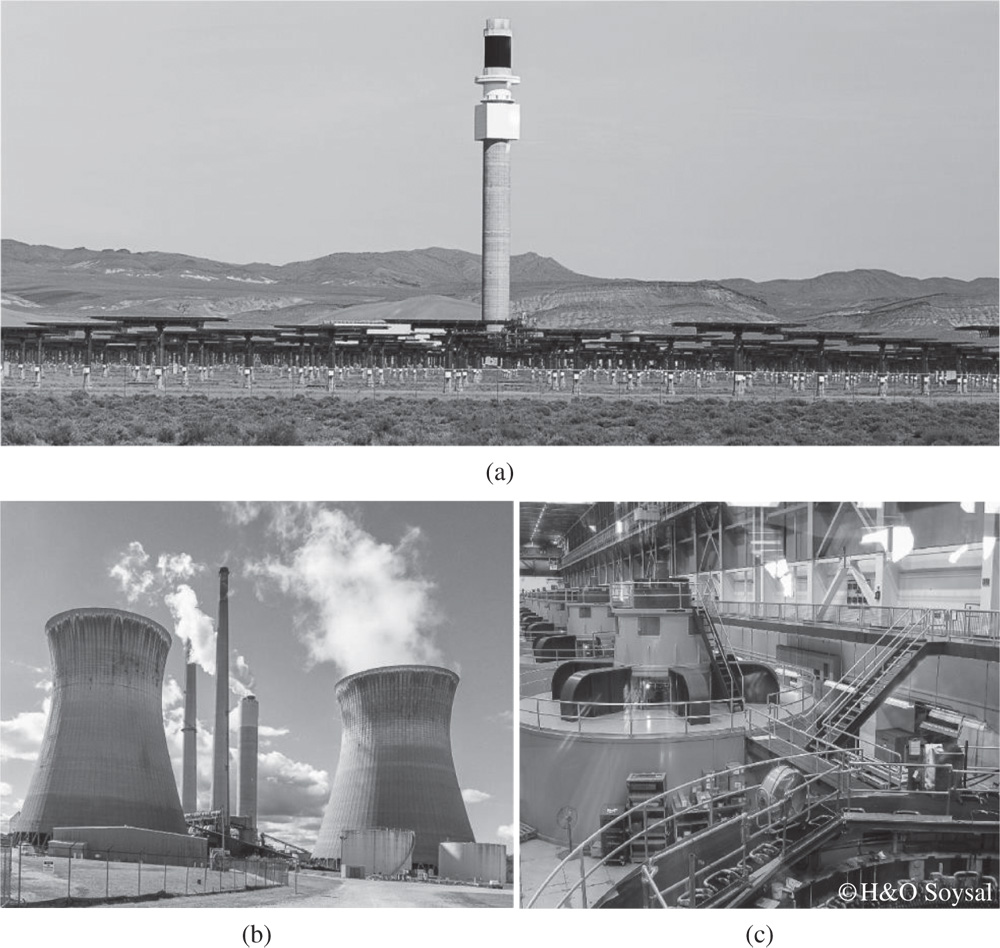2Energy Conversion and Storage

Some conversion examples\ePubPageBreak?> in energy systems. (a) Crescent Dunes Concentrated Solar Power (CSP) plant converting solar radiation into heat to generate electricity. (b) A coal‐fired power plant in West Virginia, USA. (c) Generators installed in the hydroelectric power plant at Glen Canyon Dam, AZ, USA, converting mechanical energy of water into electricity.
2.1 Introduction
In Chapter 1 we used the word energy in the sense of natural sources that can be converted to useful mechanical work, heat, electricity, and other actions. In this section, we will focus on various forms of energy and conversion from one form into another.
The concept of energy was derived in sixteenth century and named using the Greek word “ergon” meaning “work.” Energy can be defined in various ways leading to the dictionary definition “the capacity to do vigorous work; available power (Random House 1996).” While everybody has a certain insight of the term energy from everyday experiences, the use of the word energy in common language may lead to confusion in certain fields of science and technology. For example, you could spend the entire day reading a book or looking at a computer screen; at the end of the day, you might feel exhausted without having actually done any physical work. Where did your energy go? A person who has tried to move a big rock for hours ...
Get Energy for Sustainable Society now with the O’Reilly learning platform.
O’Reilly members experience books, live events, courses curated by job role, and more from O’Reilly and nearly 200 top publishers.

